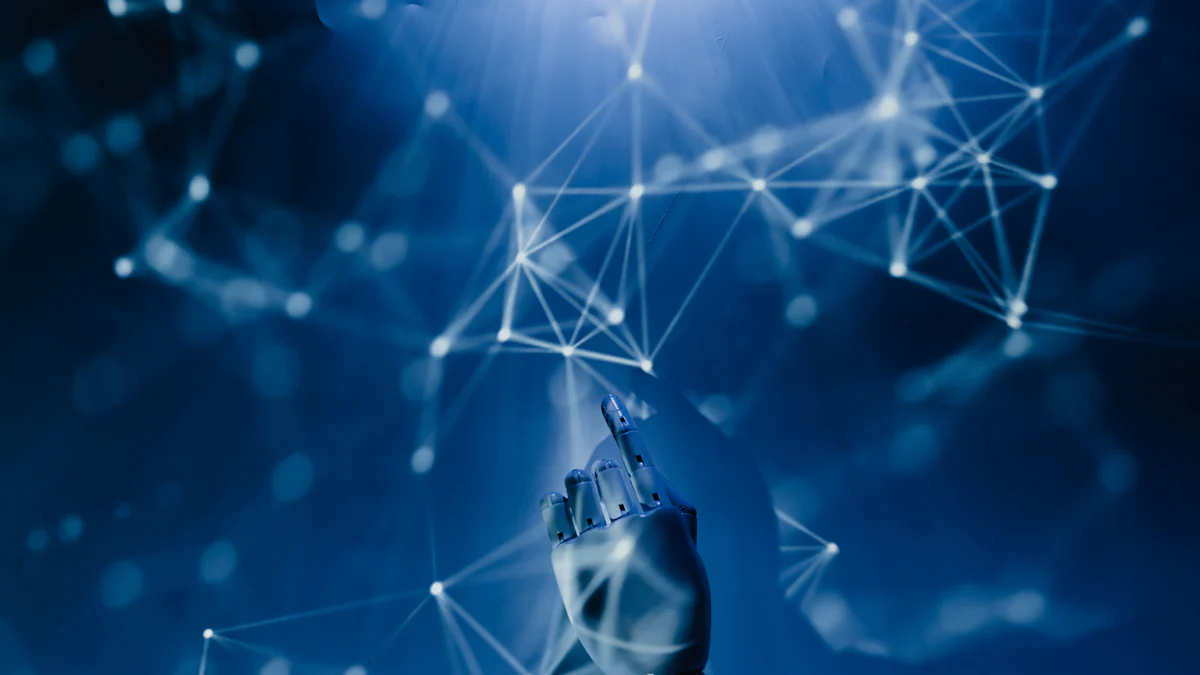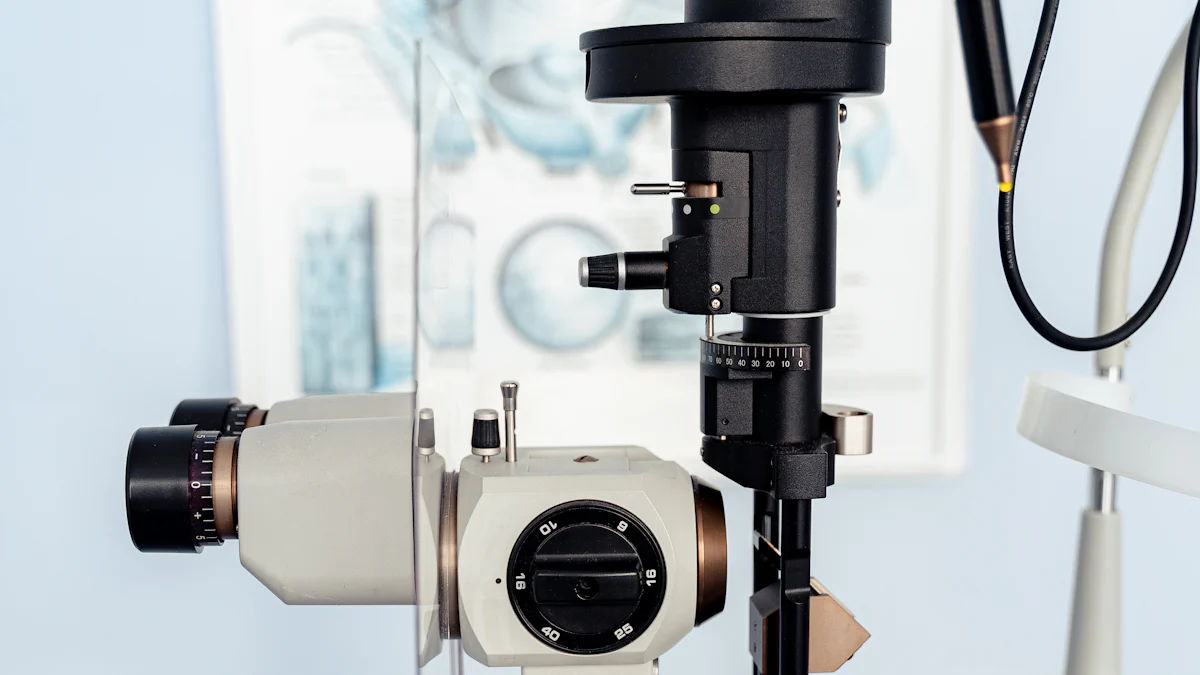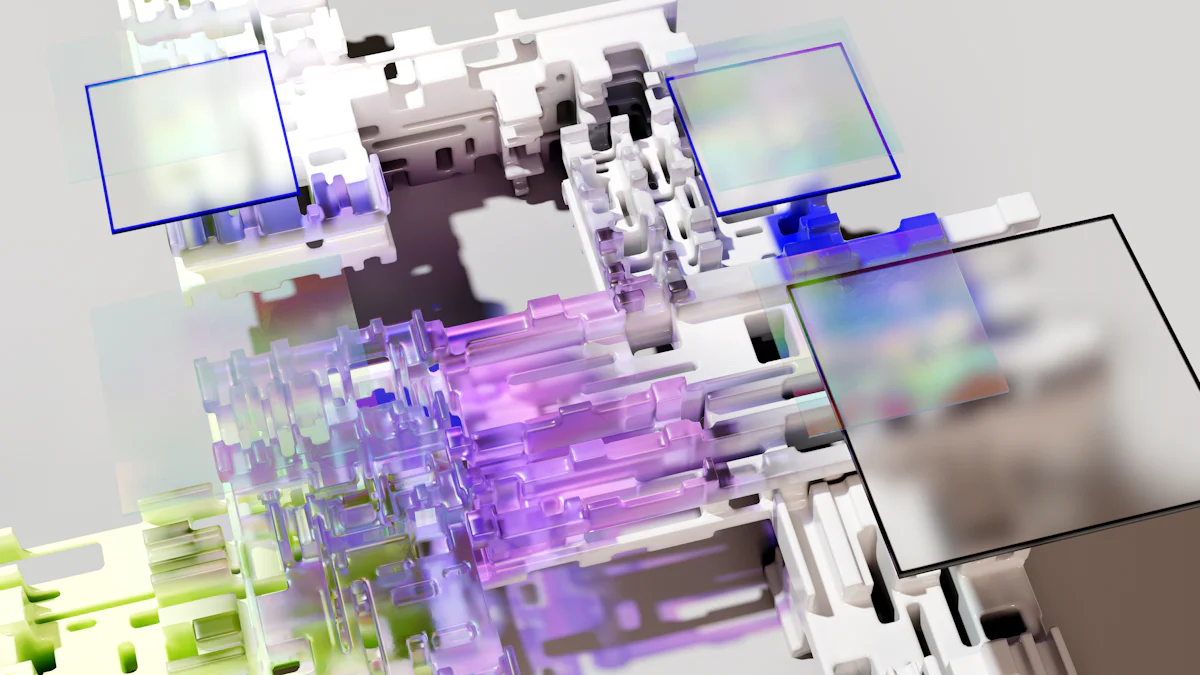
Visual inspection plays a vital role in ensuring product quality and safety. You rely on it to detect defects, maintain standards, and prevent costly errors. Over the years, industries have shifted from manual inspections to AI-driven systems. These systems detect defects with unmatched speed and accuracy, redefining quality control practices.
AI technologies, such as computer vision and deep learning, have transformed industries like automotive, electronics, and pharmaceuticals. They enhance traditional methods by improving consistency and efficiency. As Industry 4.0 principles gain traction, you can expect AI visual inspection systems to become even more affordable and widely adopted.
Key Takeaways
-
AI-powered tools help find product flaws quickly and correctly.
-
Using AI can save money by cutting labor costs and avoiding recalls.
-
Following a clear plan for AI use gives steady, good results.
Understanding Visual Inspection
Definition and Goals
Visual inspection is a cornerstone of quality assurance. It involves examining products, components, or structures to identify visible defects or irregularities. You rely on this process to ensure safety, compliance, and performance. The primary goals of visual inspection include:
-
Identifying defects such as cracks, dents, or scratches that could compromise functionality or safety.
-
Assessing the condition of objects, including wear and tear on machinery or the quality of finished goods.
-
Ensuring compliance with industry standards and regulations, such as safety codes or product certifications.
-
Improving quality by reducing defects and enhancing overall performance.
-
Enhancing safety by detecting hazards like damaged wiring or structural weaknesses.
-
Reducing costs by addressing issues early, preventing expensive repairs or recalls.
By achieving these goals, you can maintain high standards while minimizing risks and expenses.
Historical vs. Modern Methods
Traditional visual inspection methods relied heavily on manual observation. Inspectors would examine products or structures for defects, often using tools like magnifying glasses or flashlights. However, manual methods are prone to human error and inconsistency. Fatigue, subjectivity, and limited scalability often result in missed defects or inefficiencies.
Modern AI-driven inspection techniques have revolutionized this process. AI systems use advanced technologies like computer vision and machine learning to analyze images or videos with precision. Unlike manual methods, AI operates consistently without fatigue, ensuring higher accuracy and reliability. These systems process large volumes of data quickly, significantly improving production efficiency. Additionally, AI-based inspection techniques adapt to varying production demands, making them scalable and cost-effective.
The Role of Non-Destructive Testing (NDT)
Non-destructive testing (NDT) plays a vital role in visual inspection. This approach allows you to evaluate components for defects without causing damage. It is widely used in industries like manufacturing, oil and gas, and construction. Visual inspection serves as the first line of defense in NDT, offering a simple, cost-effective, and versatile method to identify potential issues.
You can enhance visual inspection with tools like cameras, borescopes, or magnifying glasses. These tools provide a baseline assessment before employing more complex NDT techniques. Modern advancements, such as AI and deep learning, further improve the accuracy and efficiency of visual inspection in NDT workflows.
The Role of AI in Automated Visual Inspection

Key Capabilities of AI Tools
AI tools bring a range of advanced capabilities to automated visual inspection, enabling you to achieve higher precision and efficiency. These tools excel in tasks that require speed and accuracy, making them indispensable in modern quality assurance.
|
Core Capability |
Description |
|---|---|
|
Object Detection |
Identifies and classifies objects in images for real-time monitoring of production lines. |
|
Text Recognition |
Extracts text from images for verifying labels and barcodes. |
|
Automated Image Analysis |
Analyzes images to identify defects that may be missed by human inspectors. |
|
Real-time Feedback |
Provides immediate feedback for quick adjustments in production, minimizing waste. |
|
Scalability |
Easily scales to accommodate varying production volumes for different manufacturers. |
These capabilities allow you to streamline processes, reduce errors, and maintain consistent quality standards.
How AI Enhances Traditional Inspection Methods
AI enhances traditional visual inspection methods by leveraging advanced technologies like machine learning and computer vision. These tools analyze visual data with unmatched accuracy and speed, reducing the likelihood of human error.
-
AI technologies improve the efficiency of quality control processes by automating repetitive tasks.
-
Machine learning algorithms identify defects with greater precision, often surpassing human capabilities.
-
AI systems accelerate inspection cycles, enabling you to meet production demands without compromising quality.
-
By providing real-time feedback, AI tools help you make immediate adjustments, minimizing waste and downtime.
The integration of AI into visual inspection transforms how you approach quality assurance, ensuring consistent results and improved productivity.
Examples of AI Integration in Industries
Industries worldwide have successfully integrated AI into their visual inspection processes, achieving remarkable results.
|
Industry |
Company |
Application Description |
|---|---|---|
|
Electronics |
Foxconn |
Uses AI and computer vision to inspect electronic components, improving product quality and efficiency. |
|
Automotive |
Tesla |
Employs AI to inspect car body surface quality, identifying defects before delivery. |
|
Pharmaceuticals |
Pfizer |
Employs AI for inspecting drug forms, maintaining quality standards in manufacturing. |
|
Food & Beverage |
Nestlé |
Implements AI to inspect chocolate products for visual defects. |
|
Aerospace |
Airbus |
Utilizes AI for inspecting aircraft components, ensuring safety and aesthetics. |
These examples demonstrate how AI-driven automated visual inspection is revolutionizing industries by detecting defects with unparalleled accuracy and efficiency.
Benefits of Automated Visual Inspection
Improved Accuracy and Speed
Automated visual inspection systems significantly enhance the accuracy and speed of defect detection. These systems inspect items faster than human inspectors, often in real-time as products move along production lines. This rapid detection allows you to identify and address issues immediately, preventing defective items from advancing further in the process. By streamlining production timelines, you can meet deadlines and market demands more effectively.
Additionally, automated systems eliminate the inconsistencies caused by human fatigue or subjectivity. They analyze visual data with precision, ensuring consistent quality control across all inspected items. This capability not only reduces errors but also boosts operational efficiency, enabling you to maintain high standards without compromising speed.
Enhanced Safety and Cost Savings
AI-driven visual inspection contributes to safer workplaces and substantial cost savings. By identifying surface imperfections and dimensional inaccuracies, these systems ensure higher product quality and reduce the likelihood of defective items reaching consumers. In critical sectors like healthcare, they help prevent medical errors, safeguarding patient safety.
Automating repetitive inspection tasks also lowers labor expenses and eliminates costs associated with rework or scrap. Early defect detection minimizes the risk of costly product recalls, while real-time alerts enable immediate corrective actions to prevent accidents. This proactive approach enhances workplace safety and reduces the financial burden of injuries, which cost industries billions annually.
Optimization and Predictive Maintenance
Integrating visual inspection into predictive maintenance strategies optimizes equipment uptime and operational efficiency. Regular inspections reveal signs of wear, damage, or abnormalities, allowing you to address potential issues before they escalate. This proactive maintenance approach prevents downtime and safety hazards, ensuring smooth operations.
AI systems also process large volumes of inspection data to provide actionable insights. These insights streamline maintenance schedules, enhance resource management, and prevent critical failures. By adopting predictive maintenance, you can maximize the lifespan of your equipment and maintain uninterrupted production.
Applications of Automated Visual Inspection Across Industries

Manufacturing and Automotive
Automated visual inspection has become a cornerstone in manufacturing and automotive industries. You can rely on these systems to ensure precision and quality in every stage of production.
-
Inspection of Car Parts: These systems detect surface imperfections, dimensional deviations, and assembly errors, enhancing vehicle safety and reliability.
-
Quality Control in Automotive Manufacturing: Automated tools inspect components to ensure they meet stringent safety and quality standards.
-
Defect Detection in Automotive Parts: Welding flaws and other critical defects are identified early, safeguarding the structural integrity of vehicles.
By integrating automated visual inspection, you can streamline production, reduce waste, and maintain high-quality standards.
Healthcare and Medical Devices
In healthcare, automated visual inspection ensures the safety and compliance of medical devices. You can use these systems to meet strict regulatory requirements and maintain patient safety.
-
Medical device manufacturing requires compliance with regulations like the Unique Device Identifier (UDI) in the US and Europe.
-
Deep learning-enabled systems decipher chemically processed DPM text on medical equipment.
-
Critical components of life-saving devices undergo inspection to meet FDA standards.
These systems also verify assembly, labeling, and packaging, ensuring medical products are safe and effective before reaching patients.
Energy and Civil Infrastructure
Automated visual inspection plays a vital role in maintaining safety and efficiency in energy and infrastructure projects.
-
Enhanced safety is achieved through early defect detection, reducing risks in hazardous environments.
-
Real-time monitoring ensures constant vigilance, allowing you to address issues immediately.
-
Predictive maintenance capabilities forecast equipment failures, minimizing downtime and environmental damage.
-
Continuous operation provides 24/7 monitoring, improving accuracy and reducing human error.
By adopting these systems, you can enhance operational efficiency while protecting workers and the environment.
Food & Beverage and Maritime
In the food and beverage industry, automated visual inspection ensures compliance with health regulations and product quality.
-
Detects foreign particles and verifies packaging integrity.
-
Checks expiration dates and ensures real-time inspection through IoT and AI integration.
In maritime applications, remote visual inspection is crucial for monitoring ship hulls and underwater structures. You can use these systems to detect corrosion, cracks, and other defects, ensuring vessel safety and longevity.
These visual inspection use cases highlight the versatility of automated systems across diverse industries, helping you achieve safety, compliance, and efficiency.
Implementing AI-Driven Visual Inspection
Common Workflows and Processes
Implementing an AI-driven visual inspection process involves several structured steps to ensure optimal performance and integration. You can follow these workflows to streamline the implementation:
-
Define the problem: Identify the specific goals of the visual inspection process and assess the manufacturing environment.
-
Gather and prepare data: Collect datasets, including images or videos, for training and validation. Organize this data to ensure accuracy.
-
Develop deep learning model: Select or design a model tailored to your inspection requirements.
-
Train and evaluate: Train the model using the prepared data and validate its performance to ensure reliability.
-
Deploy and improve: Implement the system in your production line and continuously refine it based on feedback and new data.
This structured approach ensures that your visual testing system delivers consistent and accurate results.
Tools and Technologies for Automation
Several tools and technologies enhance visual inspection automation, making it more efficient and reliable. Here are some of the most widely used options:
|
Type of Tool/Technology |
Description |
|---|---|
|
Machine Learning Algorithms |
Ideal for identifying complex defect patterns with high variability. |
|
Rule-based Visual Comparison |
Effective for detecting consistent defects in stable environments. |
|
Statistical Analysis Software |
Tracks trends like thickness variations over time. |
|
Cameras |
High-resolution cameras capture detailed images for analysis. |
|
Sensors |
Includes 3D sensors, LIDAR, and infrared sensors for non-visible parameters. |
|
Lighting |
Ensures clear image capture under various conditions. |
|
Image Processing Hardware |
Uses GPUs and DSPs for real-time data analysis. |
Additionally, drones equipped with AI-powered cameras can inspect remote or hazardous areas, improving accessibility and efficiency.
Challenges and Solutions in Implementation
Adopting AI-driven visual inspection systems comes with challenges. You may face technological, financial, and organizational hurdles.
|
Challenge Type |
Description |
|---|---|
|
Technological Hurdles |
Integrating AI with legacy systems and meeting data requirements for training. |
|
Financial Barriers |
High initial costs and ongoing maintenance expenses. |
|
Workforce and Organizational Issues |
Skill gaps in AI expertise and resistance to transitioning from manual to automated systems. |
To overcome these challenges, start with pilot projects to test feasibility and reduce financial risks. Collaborate with AI vendors for seamless integration and ongoing support. Upskill your workforce with training programs and hire specialists to manage the system effectively. Cloud-based solutions can also reduce costs and provide scalability. By addressing these issues strategically, you can ensure a smooth transition to AI-driven visual testing systems.
AI has revolutionized visual inspection by enhancing accuracy, consistency, and speed. You can automate complex inspections, reduce human error, and improve safety. By leveraging AI tools, industries achieve faster inspections, cost savings, and compliance with quality standards. Embrace AI-driven methods to unlock data-driven insights, scalability, and long-term efficiency in quality assurance processes.
FAQ
What industries benefit the most from AI-driven visual inspection?
AI-driven visual inspection benefits industries like manufacturing, automotive, healthcare, energy, and food processing. You can achieve higher accuracy, compliance, and efficiency across these sectors.
How does AI improve defect detection accuracy?
AI uses machine learning and computer vision to analyze images with precision. It eliminates human error, ensuring consistent and reliable defect detection in real-time.
Is implementing AI-based inspection systems expensive?
Initial costs may seem high, but you save money long-term. Reduced labor expenses, fewer defects, and predictive maintenance offset the investment over time.
💡 Tip: Start small with pilot projects to test feasibility and minimize financial risks.
See Also
Exploring Techniques For Automotive Appearance Evaluations
Perfecting Outer Diameter Scratch Checks With Machine Vision
Enhancing Manufacturing Quality Assurance With AI Innovations
A Detailed Overview Of Machine Vision In Automation
Excelling In Visual Checks For Sausage Packaging Safety








